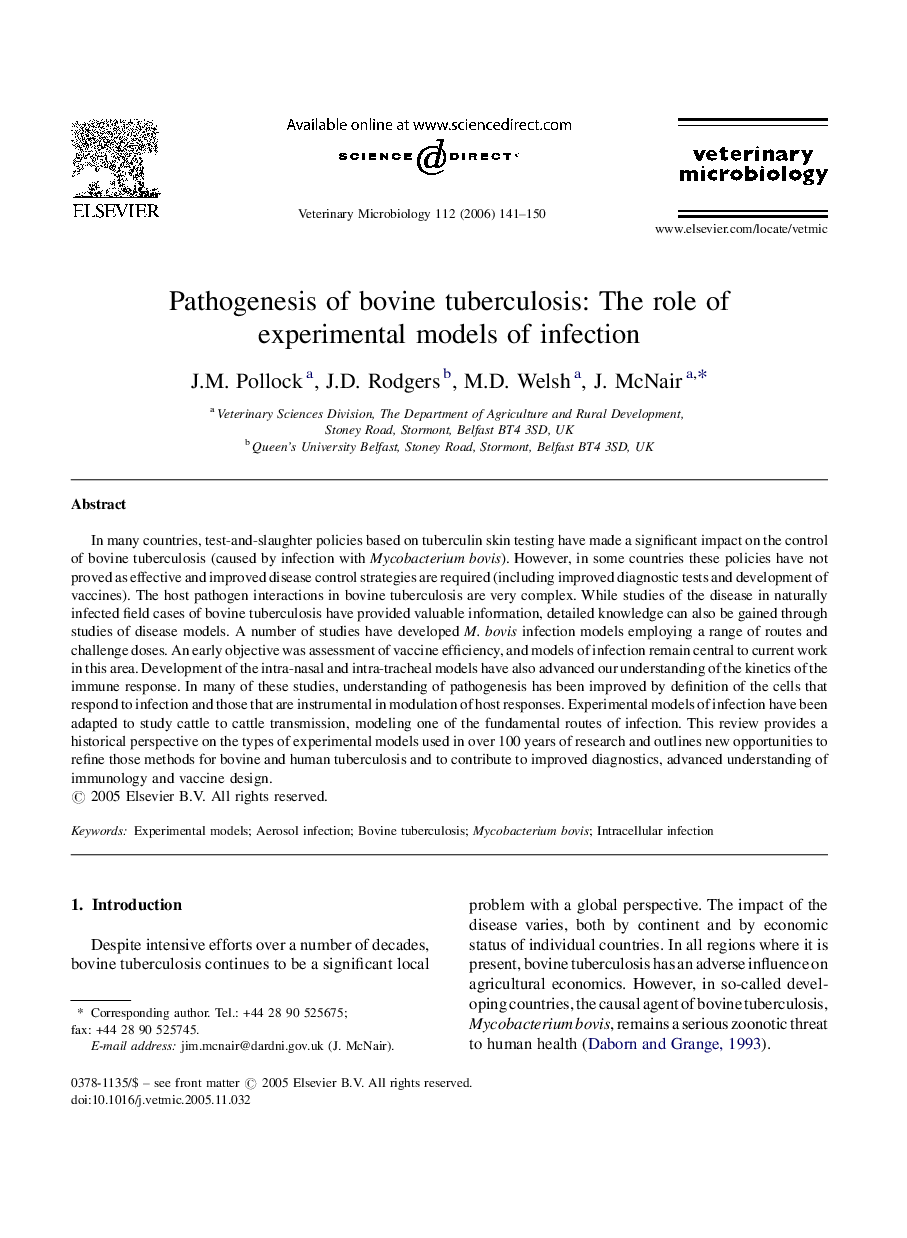| Article ID | Journal | Published Year | Pages | File Type |
|---|---|---|---|---|
| 2469590 | Veterinary Microbiology | 2006 | 10 Pages |
In many countries, test-and-slaughter policies based on tuberculin skin testing have made a significant impact on the control of bovine tuberculosis (caused by infection with Mycobacterium bovis). However, in some countries these policies have not proved as effective and improved disease control strategies are required (including improved diagnostic tests and development of vaccines). The host pathogen interactions in bovine tuberculosis are very complex. While studies of the disease in naturally infected field cases of bovine tuberculosis have provided valuable information, detailed knowledge can also be gained through studies of disease models. A number of studies have developed M. bovis infection models employing a range of routes and challenge doses. An early objective was assessment of vaccine efficiency, and models of infection remain central to current work in this area. Development of the intra-nasal and intra-tracheal models have also advanced our understanding of the kinetics of the immune response. In many of these studies, understanding of pathogenesis has been improved by definition of the cells that respond to infection and those that are instrumental in modulation of host responses. Experimental models of infection have been adapted to study cattle to cattle transmission, modeling one of the fundamental routes of infection. This review provides a historical perspective on the types of experimental models used in over 100 years of research and outlines new opportunities to refine those methods for bovine and human tuberculosis and to contribute to improved diagnostics, advanced understanding of immunology and vaccine design.
